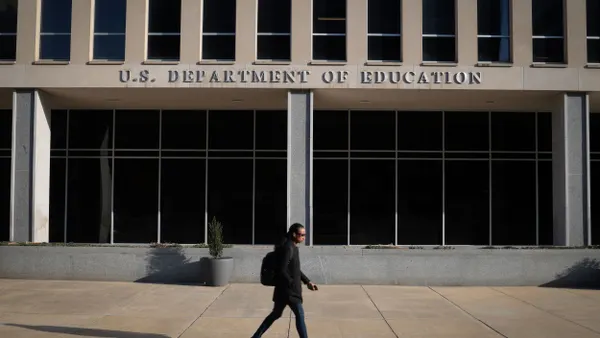Dive Brief:
- California middle school ELA teacher Heather Wolpert-Gawron writes for Edutopia that curriculum designers and educators should create "entry events" every school year, providing a moment that sparks excitement and curiosity around learning while helping to propel students during class.
- An entry event could be something as dramatic as transforming a classroom into a jungle if students are reading "Lord of the Flies," as Wolpert-Gawron noted, or it can also be something small, such as playing a video during a lesson. Her preferences tend to lean toward visual stimuli when selecting an entry event for her class, as the "brain processes visuals 60,000 times faster than text alone."
- The point, she writes, is to create a moment that causes students to get excited and to shake the cobwebs from their preconceived ideas of what school should be.
Dive Insight:
An entry event, as Wolpert-Gawron wrote, can help rocket students into a new attitude around subjects that they’re learning in school, but these events also give some valuable context to help students better understand why they need to know what they’re learning.
Educators have the option to choose the fuel they want, whether that’s bringing in visual aids or perhaps inviting in an exciting speaker who can deepen the connection of what they’re studying in the classroom to how they may use that learning later in their lives. As teachers are discovering, project-based learning and hands-on activities are an effective way to show students the impact of what they’re learning, fueling excitement while also developing softer skills including self-regulation.
When considering an entry event for the year, educators might look to address two steps at once. They can create some anticipation for the school year through a project-based learning approach that not only ignites the thrill of learning but also helps them understand the promise of what their education can deliver.





 Dive Awards
Dive Awards






